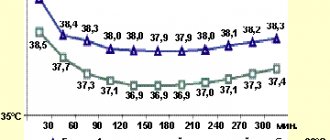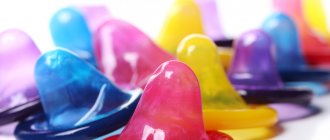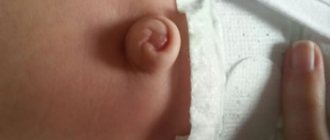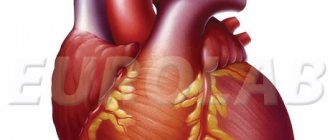Several years before the onset of her first period, starting from 8-11 years old, the girl (and those around her) notice the following changes in appearance:
- The figure takes on a more rounded, feminine shape.
- The breasts begin to grow.
- The hips become wider.
- The first hair appears on the pubis and armpits.
- Problems with the skin begin as the sebaceous glands are activated, the peak of their activity occurs on the skin of the face, back and chest.
- Hair roots look oily even if the frequency of hair washing and detergent does not change. Dandruff often appears.
- Abundant milky vaginal discharge appears, usually without a specific odor, since its main function is to cleanse and moisturize the vagina.
Why do periods appear?
The causes of menarche lie in the hormonal changes that occur in the body during puberty1,2.
There is a small but very important gland in the brain - the hypothalamus, which controls the functioning of the entire endocrine system1,2. When a girl enters adolescence, her hypothalamus releases releasing factors into the blood (from the English word Release - to free) and thereby starts the process of puberty1,2.
Releasing factors act on another gland of the brain - the pituitary gland, which, in turn, begins to synthesize luteinizing hormone (LH) and follicle-stimulating hormone (FSH)1,2. They activate the ovaries and the production of sex hormones estrogen and progesterone.
Under the influence of estrogen and progesterone, the uterus prepares itself for pregnancy every month. The inner mucous membrane of the uterus grows, loosens and turns into a “featherbed”, ready at any moment to receive a fertilized egg. If pregnancy does not occur, the uterus gets rid of the unnecessary inner layer, it comes out along with menstrual blood and everything starts all over again.
Up to contents
More
- Scene;
- Period Remedy;
- Menstruation remedy two;
- Remedies for pain.
| [ + ] Menstruation is something about a woman. | |
| Methods | Abortion (Pros/Cons) • Two strips • Contraception (COC) |
| Diseases | Cervical cancer • HPV • Hidden infections |
| [ + ] Menstruation is an integral part of being human. | |
| Physiology | Physiological: Blood (Complement) • Urine • Feces • • Hormones • Death • Immunity • Carcinogenesis • Atherosclerosis • Pathogenesis Higher: Automatism • Sleep • Stress • Will (Laziness) Sexual: Sex • Orgasm • Sex hormones • Menstruation • Sperm • Pregnancy |
| Pathanatomy | Fibrosis • Cancer |
| Pathphysiology | Syndrome • Pain • Heredity • Mental automatism • Jaundice • Diarrhea • Myopia |
| Chemistry | Urea • Uric acid • Dihydrogen monoxide |
Precursors of the first menstruation
Female sex hormones - estrogens and progesterone - constantly circulate in different quantities in a woman’s blood1,2. In addition to the uterus, they affect other organs and systems1,2. You will notice changes in them much earlier than menarche. Moreover, by their appearance you can judge how soon your first menstruation will be.
| Breast engorgement | the very first sign that you have begun puberty (puberty)2. The nipple becomes convex and slightly increases in diameter - usually 2 years before menarche2,3. For doctors, this is a kind of guideline. If menstruation never starts, there is cause for concern3 |
| Appearance of pubic hairs | the second harbinger of menstruation in girls. Usually the first hairs “break through” simultaneously with nipple enlargement2. But in the armpits, hair appears much later - about six months before menarche2 |
| Growth spurt | occurs approximately one and a half years before the first menstruation2. During this period, you may become much taller than your peers with a later onset of sexual development. As soon as growth slows down, wait for your first menstruation2 |
| Unreasonable changes in health | weakness, daytime sleepiness, sudden mood swings, headaches, slight dizziness, nausea, heaviness and even pain in the lower abdomen can indicate approaching menstruation. These are not mandatory signs, but some women experience them regularly a few days before their period3 |
Up to contents
1) Severe pain during menstruation is a reason to consult a doctor
Severe pain often occurs in nulliparous girls. After childbirth, menstruation usually becomes less painful, this is due to changes in the anatomy of the internal genital organs (the position of the body relative to the cervix changes or, for example, during pregnancy the curvature of the uterus changes shape and size). Another common cause of pain is endometriosis, when cells in the inner layer of the uterine wall grow outside of it.
If your periods are painful, reduce your productivity and worsen your quality of life, consult a doctor - he will determine treatment tactics.
It is believed that a predisposition to pain is transmitted genetically. But this is an unproven fact.
At what age do girls start menstruating?
In girls of the European race, menarche most often occurs at 12-13 years of age, less often menstruation occurs at 10-11 years and 13-14 years1,2,3. Over the past 100-150 years, scientists have observed a marked decline in the age at which puberty begins2. Therefore, menstruation in a 9-10 year old girl no longer frightens doctors and parents2,3. Rather, the absence of menstruation at the age of 14.5 years is alarming2,3.
All the figures we have given are average values. Things may be a little different for you. The appearance of menarche is influenced by many factors:
- Genetics. If your mother started menstruating later than her peers, then there is a chance that you will have to wait a little too2.
- Race. Early menarche is typical for representatives of the Negroid race, Latin Americans, and for Caucasians and Asians, menstruation begins later2.
- Nutrition. Good nutrition promotes the formation of menstruation, but diet delays puberty 2.
- Body mass. Slightly plump girls start their periods earlier2. But if body weight is significantly higher than normal, there is a delay in the appearance of menstruation2.
Up to contents
4) When choosing gaskets, focus not on the price, but on the composition
Pads don't have many advantages over tampons. It's all about comfort. Some women absolutely cannot use tampons - they are uncomfortable or even painful. Pads are also used by girls who are not sexually active.
They need to be changed every 4-6 hours depending on the amount of discharge. The disadvantages of these hygiene products are the “greenhouse effect” due to the tight fit to the perineum and lack of air circulation, irritation and even allergic reactions. You need to focus not on the price, but first of all on the composition: natural materials (cotton), a minimum of fragrances and flavors.
By the way, dermatologists now do not recommend using panty liners, as they can cause allergic reactions and dermatitis on the skin of the external genitalia.
What are the first periods?
Menstruation can last from 2 to 7 days - everything is individual2,3. When your period just begins, little blood comes out of the vagina and it is dark red in color. Then there is more of it and it becomes brighter. Sometimes, if your menstruation is heavy, small blood clots may sometimes appear in your discharge. There is no need to worry about this: this is how the body limits blood loss2.
In the last days of menstruation, the amount of discharge decreases, it again becomes dark, sometimes almost black. This happens because little blood is released from the uterus; it is retained in the vagina and oxidized2,3.
How much blood is released during menstruation? It's different for all girls. Some people lose only 20 ml of blood per day3. In others, the volume of blood loss approaches 80 ml3. On average, the amount of blood lost per day is 30 ml3, which is approximately equal to the amount that 4 small ob® tampons can absorb. Over time, you will learn to select hygiene products taking into account your individual characteristics. And in order not to miss the onset of menstruation, we recommend that you use Carefree® panty liners on the days when your discharge may begin. They will protect your clothes and you will feel more confident.
Menstruation comes cyclically, about once a month. The interval between the first day of one menstruation and the first day of the next menstruation is called the menstrual cycle1. Its duration can be from 21 to 35 days3. Moreover, every woman’s cycle should be stable with fluctuations of +/- 2 days3.
The first 12-18 months after menarche, menstruation is often irregular, the interval between them can either be shortened or lengthened to 45 days3. The nature of menstruation may also change. At first they are often profuse and painful3. But gradually, over 2-3 years, everything returns to normal3.
To control your cycle, we recommend that you keep a special menstruation diary or use an application on your phone for this, and if “emergency” situations arise, always contact your mother or doctor.
The information in this article is for reference only and does not replace professional advice from a doctor. To make a diagnosis and prescribe treatment, consult a qualified specialist.
Up to contents
Literature
- A. O. Drobinskaya. Human anatomy and physiology / Textbook for secondary vocational education. — 2nd updated edition. - Moscow: Yurayt (Moscow), 2021. - P. 252 -259.
- Jennifer Knudtson, Jessica E. McLaughlin. Female reproductive endocrinology / 08.2016. — URL: https://www.msdmanuals.com.
- N. Yu. Baranaeva. Normal menstrual cycle and its disorders // Consilium-provisorum. - 2002. - T. 2, No. 3.
Up to contents
It is the duty of every woman to know about it and be able to feel her body.
In addition to the article, our online store offers you modern intimate feminine hygiene products that will help you get through your period with maximum comfort and safety.
For example:
The menstrual cup is an ultra-modern product for feminine intimate hygiene. Gives a new degree of freedom during the period. Menstruation is no longer a reason to procrastinate or feel inconvenienced.
We always have in stock a simply gigantic assortment of silicone menstrual cups from various manufacturers.
Germany, Finland, Spain, Russia, China. Anatomically shaped, with a valve, with a “stem”, “ring”, “ball” tail type... sets of bowls made of safe medical silicone and thermoplastic elastomer...
You can get acquainted with it and choose the one that suits you on the product page:
Special reusable menstrual panties, protective with a waterproof layer, or hygienic, which can be worn without tampons and pads. It's easy to choose your size from products from more than 10 manufacturers.
In the photo, the panties are worn on the model inside out so that you can estimate the size of the absorbent and protective waterproof layers “from elastic to elastic.”
With high, medium or low waist. Slips, bikinis, and even thongs.
Visit our online store page with special underwear for your period: “Menstrual panties”
18) Permissible fluctuations in the menstrual cycle – /- 2 days
It happens that a girl’s period comes like clockwork, but this time there was a glitch. But foreign authors say that a delay of up to 20 days in patients with a regular cycle is a variant of the norm. There can be many reasons for this, the most common are stress, change in weather conditions, heavy physical activity.
But there may be other reasons - ovarian cysts, hormonal disorders, taking medications. My advice: if your period does not come on time, wait 7 days and contact your gynecologist. If, against the background of a delay, you have other complaints - vaginal discharge, abdominal pain - you need to contact a gynecologist as soon as possible.
16) PMS can lead to depression
PMS is a complex set of symptoms that occur due to fluctuations in sex hormone levels. That is, this condition is far from a myth! PMS can manifest itself with a variety of symptoms: swelling, breast tenderness and irritability, and even severe depression.
Severe PMS leading to distress and depression is also called premenstrual dysphoric disorder. Its obligatory condition is the cyclical manifestation of symptoms: 5-10 days before menstruation and ending at the moment of their onset.
Another remarkable property: PMS is characteristic only of ovulatory cycles and, if for some reason there is no ovulation, then PMS is not expressed.
6) The main thing is to choose the right size of the menstrual cup
Manufacturers' websites have detailed instructions on how to determine the length of the vagina and choose the cup size yourself. The fact is that each manufacturer has its own size range; there is no universal scheme. Plus, the bowls are very soft and elastic. The first ones are less noticeable inside, but more difficult to remove. Keep in mind that you may not be able to insert and remove the cup the first time, but you will get the hang of it. I advise you to try using the cup before your period begins - this way you will determine for yourself the most comfortable position for inserting it.
It is important to store this hygiene product correctly (in a fabric bag) and process it promptly before use and after the end of menstruation.
After removing the tray, you need to rinse it under cold water, and then reinsert it, of course. Every month, the mouthguard must be sterilized in hot water for 3-5 minutes or use special sterilization tablets.
If you choose the right bowl size, you can use it at night and sleep peacefully.










